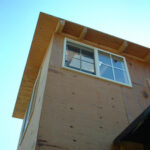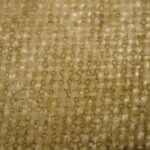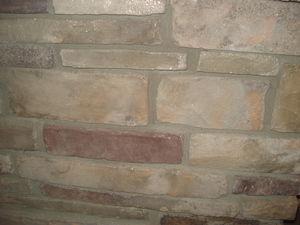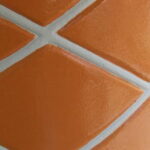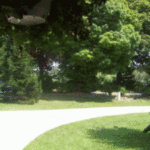Installing bathroom tile is something any do-it-yourselfer can do with a little bit of information. This article will discuss a standard tile installation over a tub. But the same methods could be applied to any wall tile installation.
Before you begin, you will need a clean, dry surface over the tub on which to install the tile. If this is a new house or room addition, this should already be done. You or your contractor should have installed water resistant gypsum board or ‘green board’ over the tub area. You could also use fiberglass mesh concrete panels instead. These are more expensive, but completely impervious to water.
The materials and tools you need can be found at your local home store. A typical tub enclosure needs about fifty square feet of tile. This brings the tile to just below the shower head. Your installation may vary depending on how high you want to run the tile. You will also need forty-five to fifty pieces of bullnose tile and two corners to dress up the edge of the installation. These come in six inch by two inch pieces. You probably also want a soap dish and a towel bar. To install the tile, you will need about a gallon of tile glue and about ten pounds of tile grout. To install the tile, you will need a measuring tape, a level, a notched trowel to spread the glue, a rubber grout float, a tile cutter, and tile snips. Have someone at the store where you buy the materials show you how to use the tile cutter and snips.
The tile needs to be installed level. Unfortunately, the tub probably isn’t level and the walls probably aren’t plumb. Check both of these with the level, but this article will assume they are not. This means you have to plan on cutting the tile at the tub and in the corners to get a level and plumb installation.
Begin by marking a line about 14 inches above the tub using your level. Assuming you are using standard four inch tiles, this gives you three whole tiles and about a half to run around the tub. This also should get you a level line above the cut outs for the water pipes. Spread the glue below this line on the pipe wall to get started.
Now, placing your level plumb against the outside edge of the tub, place your first tile against the level and even with your line. Continue setting the tile across your line, and down toward the tub, placing all the whole tiles you can. Use the rubber grout float to tap them into place. There are spacers on the edge of the tile to keep them the correct distance apart. Place your level back on the line at top and make sure these tiles are level and straight. In any tile installation it is critical to begin straight and square.
Next, using careful measurements cut your tiles along the wall and the tub. Start with the ones in the corner for practice. Remember, a quarter of an inch will be covered up by the tile on the adjoining wall so they don’t have to be perfect. The tiles along the tub should fit as perfectly as possible. Always place the cut edge away from the tile next to it. Finally, make the cuts around the water pipes. You may need to split the tiles before using the snips, or you may buy a hole saw that fits on a standard drill.
Next, placing your level on the back wall, but resting on the top of the tile you just installed, continue your level line around the other two walls. Use the same method to install the tiles level around that line, cutting into the tub and corners. Once you have the bottom section done, simply continue to spread glue and stack the tiles on top to just below the height you have decided on.
Leave two tiles out where you want the soap dish. Also, holding the towel bar in place for measurement, leave two tiles out for it. The towel bar post only takes up half a tile, so cut a tile in half and place it where you need to fill in at the towel bar. Where the soap dish goes, make two one and a quarter inch cuts and place them toward the outside of that space with the cut edge facing inwards. Double check to make sure the soap dish fits and the flange covers the tile.
Once you have the tiles in place, surround this with the bullnose tiles to give a finished edge. Wash any excess glue off the tile and you are ready for grout. You will install the towel bar and soap dish using grout instead of glue.
Mix the dry grout powder with water in a clean bucket to the consistency of mayonnaise. After mixing the grout, let it sit for a few minutes. This process allows the grout to stiffen a bit before you try to apply it. After a few minutes, stir it up again, to the original consistency and you are ready to apply it.
Apply the grout with the rubber grout pad pressing it into the joints. Spread the grout thinly and evenly over the tiles, making sure you fill the joints in between. Start with a small area until you get more comfortable with the application. Grout contains cement, so you don’t want to spread more than you can wash off before it sets.
After you spread on a small section, use the edge of the tool to scrape back across the tile and remove as much excess as you can. Use the handle of an old toothbrush to strike the joint, or scrape the handle edgewise down the tile joint. This will do two things. First, it compacts the grout in the joint for a better installation. Second, it gives a smooth, even finish to the grout making it easier to wash off.
As you get to the sections with the soap dish and towel bar, use a putty knife to spread a bit of grout around the edge of the flange on the back. Press the fixtures into place and apply pressure to force it back into the wall squeezing grout out around the edges. Use your finger to pull off excess grout and allow this to sit a few minutes before washing it off.
Now that you have applied the grout, wash the tile off with a sponge using clean water. Be sure and remove all the excess grout from the tile, but be careful not to wash it out of the joints. After you have completed a wall, the grout will dry back on the tile in a light haze. This can be buffed off of the tile with a dry towel, leaving a beautiful tile installation.

